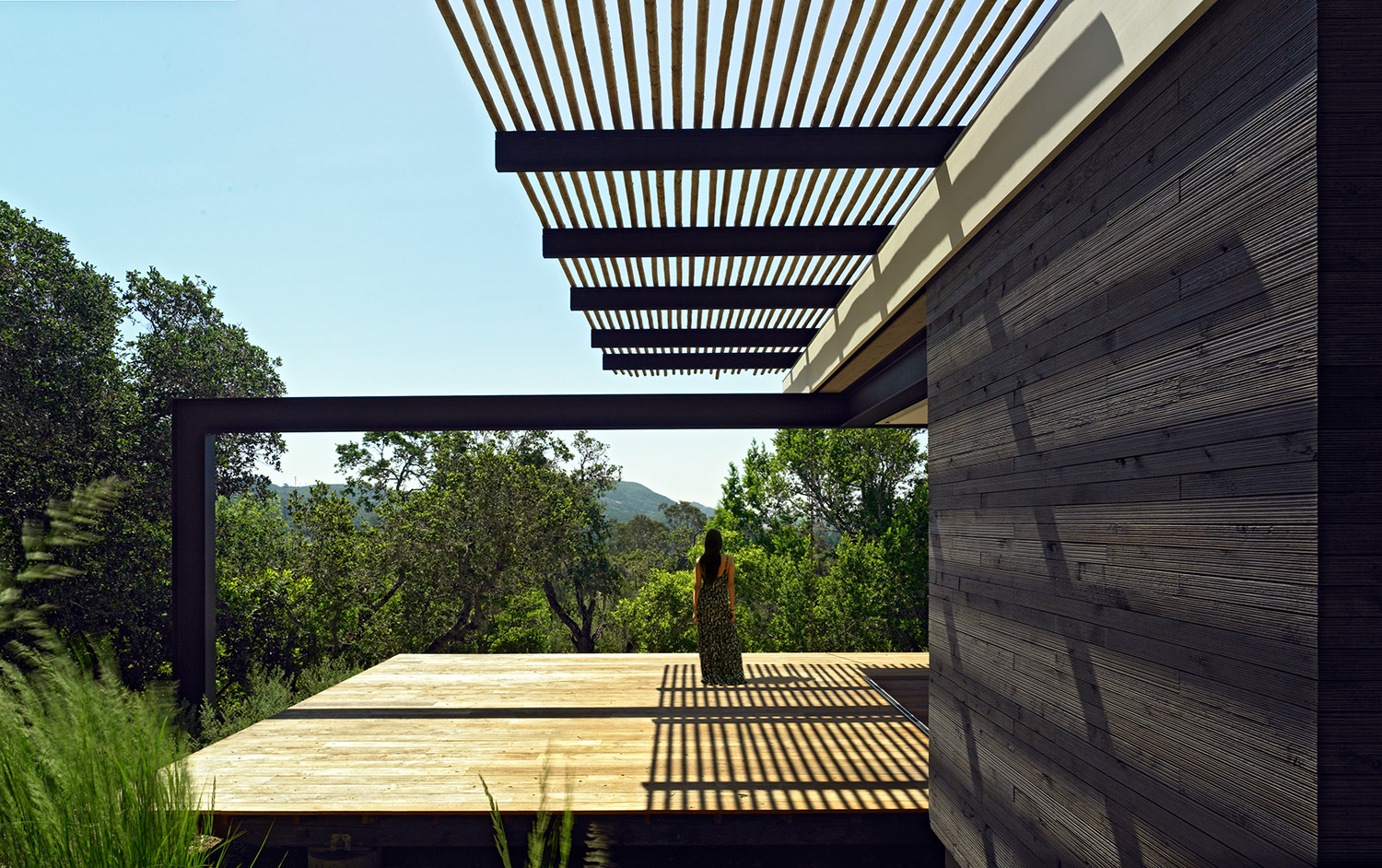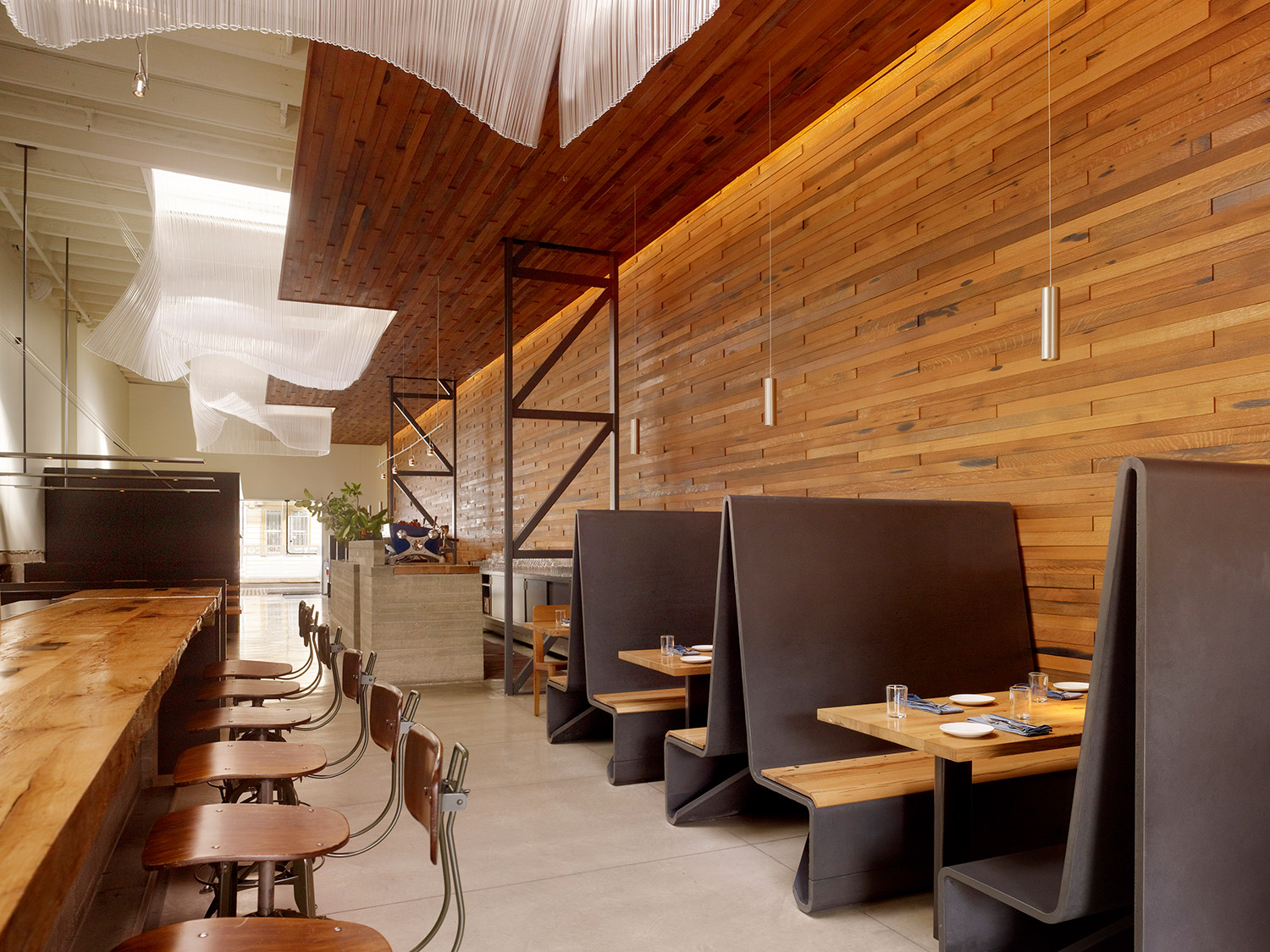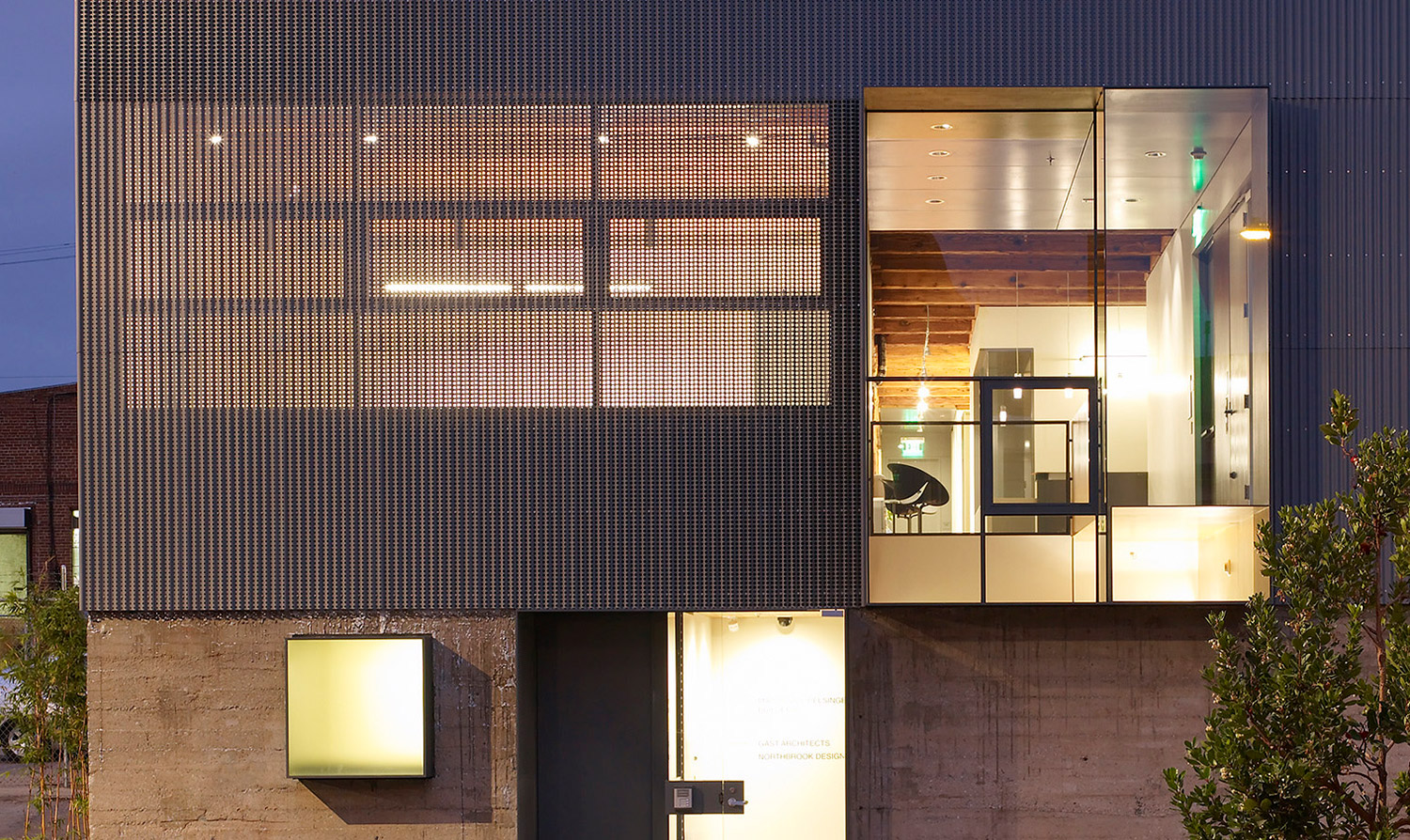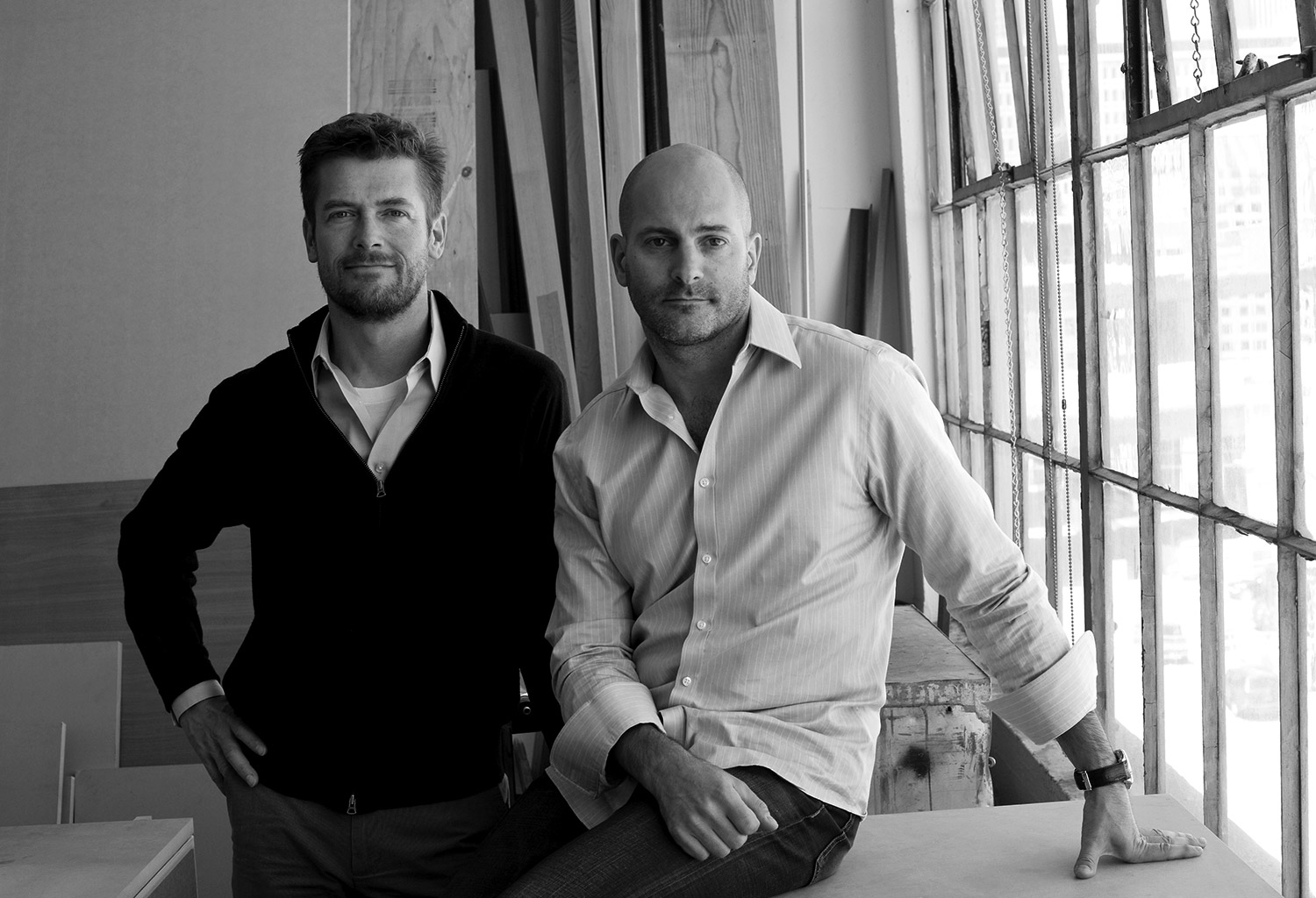
[Photo by Aidlin Darling Design]
Back in spring 2013, we visited with the designer and architect Joshua Aidlin at his San Francisco office, where we discussed what it means to be multidisciplinary, why his firm Aidlin Darling designs for the entire food chain, and the importance of camping out on-site. We hope you enjoy this interview from our archives. Part II of the interview can be read here.
Some firms push the envelope of design, while others tend to get things built. What ingredients have contributed to the fact that Aidlin Darling is doing both very well?
My business partner David Darling and I set out to create a studio environment rather than an office environment. It’s based more on an academic studio—both physically and emotionally, in its size and in how we study a problem. We began with a notion to not just create buildings; we wanted the studio to be multidisciplinary so we could potentially take on sculpture and industrial design projects as well. Having an ethos of exploration in all creative mediums opens the door to discovery on any project, emotionally and sensually. For that reason we’re Aidlin Darling Design and not Aidlin Darling Architects.
From the beginning we were also furniture designers and makers; we have a fascination with how things are made, and our instinct is to push all material mediums to their limits. Once we have a commission, we consider it an opportunity to create something much more than a building; it’s an opportunity to explore different materials, light, and the physical makeup of architecture.
How do different clients respond to this ethos of exploration?
Residential clients tend to be more conservative than public project clients because they don’t have to live in it. Whether the program is a restaurant, a school, or a chapel, public project clients are much more open to exploring different physical manifestations of architecture.
Moving out of the residential realm and into the public, do people have fewer preconceptions about what things should look like?
Absolutely, and this gives us more freedom. San Francisco can be a very conservative market, but it is slowly changing. Fortunately, we’ve already established our reputation of creating thoughtful, well-crafted architecture, and we have plenty of built work. So we’re able to reassure a client that they’ll get an extremely high-quality building, making them more willing to experiment with the architecture.
With the design role you’ve played in some of Northern California’s most notable restaurants, bars and wineries, is there a common thread for you between food and design?
Given our rural backgrounds, we have this interest in designing for the entire food chain. We’re fascinated with the whole ecology—from worker housing and organic markets, to restaurants and wineries. We’re currently working with chef-owner Corey Lee (Benu), and bartender-owner Thad Vogler (Bar Agricole), each of whom is obsessed with the craft of food. The ingredients and combinations are an art form to Corey and Thad, just like buildings are to us. With these projects, it’s essential to get inside the psyche to learn what’s important to the bartenders and chefs.
For example, the entire design of Bar Agricole is driven by a very simple concept: at 95% of restaurants, your liquids are served by the bar. This means the bartender is attending to everyone at the bar, and also scrambling to accommodate the patrons in the dining room. Given this circumstance, the drinks are typically compromised. The design of Agricole centers around two bars; a public bar, and a private bar that serves the restaurant exclusively. As a diner, every drink you get — whether it’s coffee, tea, beer, wine, or a cocktail — is treated with the same specificity and craft as the food. This concept drove the entire plan.
Your team takes on architecture, interiors, and landscape and product design. Is there a threshold where being multidisciplinary spreads the firm too thin?
There certainly is a danger to it. I used to physically make everything, but I don’t have time for that anymore; I miss being in the wood shop. I still think the cross-pollination within the studio is reinforcing rigorous designs in ways you might not predict. There may be a threshold, but we haven’t crossed it.
Is there a perfect size office in your experience?
We’re at the tipping point with 16 or 17 people because David and I don’t want to solely be managers. At this size we still get to engage at the level of materiality and detail exploration. I get to go to every meeting with the crafts-people on a project and have a dialogue with the project architect. I get to have conversations with the maker about how far we can push concrete or how to texture the finish. If we get too big, I won’t be in any of those meetings. Ultimately you want to enjoy what you do, and if you love collaborating with the makers and engaging people who really need your services, you have to have the time to do it.
One of the things that makes our studio unique is that we treat everyone in the office as a designer. We need them to be designing regardless of what they’re working on. Everyone gets a lot of input on the design, whether they have two or 25 years of experience. It’s an incredibly democratic office. For example, we’re currently designing a 30,000-sf high school in Santa Rosa, and we started it with a collaborative group design effort. We gave the whole studio the problem statement, and a week later, before the principal and project architect had even started designing, everyone presented their ideas. It was shocking how many great concepts percolated unconsciously and ended up in the final design.
What challenges have you faced over the years?
The biggest challenge was segueing from the private to public sector, mostly because we had to jog the public’s perception of our firm. That involved an aggressive pursuit of requests for proposals and qualifications, and then winning those commissions without much public work experience. We had to find someone willing to take a chance on us.
What measures do you use to track the success of the firm?
Much of it is how we feel at the end of a project, how proud we are of what we created—with every one of them, we’ve left everything on the table. We didn’t hold back. That’s all we can really ask. We also take great pride in the culture we’ve developed within the studio.
You’ve mentioned that your work requires slowing down and taking in the stimuli of a site. Being the urbanite that you are, do you have psychological tools to help you slow down and get into that mode?
We try not to overbook ourselves, and to only accept projects that we can devote a concentrated effort to. If we give ourselves enough time to actually focus on the design, we can do it. For every one of our projects, we begin by camping out on the site, be it rural or urban; being there with no distractions and absorbing what it has to offer allows a quietness and an ability to reflect.
Your work is based on sensuality as a counterpart to the rationality of architecture. Is this a response to a society that’s become too scientific about things?
This is a huge personal focus and obsession with craft. You can walk into a very rational building and feel nothing. But you know it when you walk into an Eero Saarinen, Frank Lloyd Wright, or Peter Zumthor building; they are acknowledging all of the senses—and that is the backbone of our practice. By designing buildings for all of the senses, the results will ultimately have a very sensual quality.
Joshua Aidlin is a founding partner of Aidlin Darling Design, formed with David Darling in 1998. Aidlin Darling Design rigorously explores design across a wide range of scales, programs and disciplines, with the goal of enabling poetic, sustainable and appropriate solutions. The firm has been chosen as a National Design Award Winner by the Smithsonian’s Cooper-Hewitt National Design Museum and has been awarded over thirty regional, national and international design awards in the past two years. Joshua received his bachelor of architecture degree from the University of Cincinnati.










